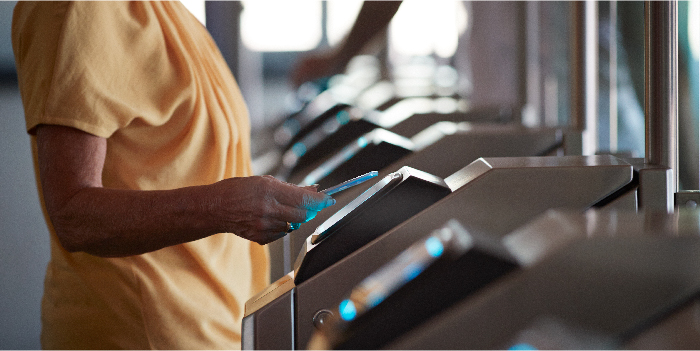According a report by United Nations by 2050, the urban population in India will have increased to 87.7 million According a report by United Nations by 2050, the urban population in India will have increased to 87.7 million and the rural population will account for 78.3 million people.
According a report by United Nations by 2050, the urban population in India will have increased to 87.7 million According a report by United Nations by 2050, the urban population in India will have increased to 87.7 million and the rural population will account for 78.3 million people. This would increase the population density and also add immense pressure on the existing resources and infrastructure. Transportation won’t be spared either.
The changing payment landscape in India has raised the bar for technology players as well as solution providers. Today, consumers have a multitude of options to purchase any good or service and mostly, this happens with just a few clicks. It comes as no surprise that consumers will seek the same, if not heightened, sense of convenience when it comes to mobility as well. This makes payments an integral part of the ever-evolving mobility scenario in India.
While mobility has gained momentum in the last few years, payments as a service will certainly drive this forward.
QR Code Ticketing
Even before QR code revolutionised the digital payments as we know it today, Kochi Metro introduced QR based (paper) ticketing in 2017. AGS Transact Technologies collaborated with KMRL to address the main concern with use of QR codes in transit i.e., longer scanning time, by launching a more efficient QR code system that takes only 100 milliseconds to scan the code as compared to the 250 milliseconds taken by a contactless card to scan. Cut to the covid-19 pandemic, QR code is driving the wave of contactless payments in India across all sectors including mass mobility.
The biggest advantage that QR based tickets offers is swifter and hassle-free checkouts. Being contactless, this solution is seen as a game-changer in days to come. BEST in Mumbai and State Transportation Buses in Maharashtra are already beginning to test this ‘contactless’ ticketing solution.
Mobility Cards
Currently, each mode of transport in India has its own ticketing system and mobility cards such as National Common Mobility Card intends to integrate this. For instance, if a commuter has to reach destination B from point A, all he has to do is tap a single card (NCMC) at all ticketing or entry/exit points – be it metro, buses, ferry or even an auto rickshaw. This eliminates the hassle of carrying exact change and also brings down the commute time significantly. Being RuPay-operated, this card can be used to withdraw cash from ATMs as well.
Looking at the pandemic and its impact, these NCMC cards are likely to consume the future of mobility. Recently, Prime Minister Narendra Modi launched National Common Mobility Card (NCMC) service for the Delhi Metro’s Airport Express. This card will enable passengers from any part of the country to use their NCMC-compliant RuPay debit card for seamless travel.
Kochi Metro had already deployed NCMC Cards with Axis Bank where AGS Transact Technologies is the system integrator. Similarly, Bangalore Metro and Chennai metro station are also in process of introducing NCMC. Bangalore Metro has already awarded this work to RBL Bank Ltd. where AGS Transact Technologies will be the Technology Partners.
National Electronic Toll Collection
To avoid congestion at toll plazas, National Highways Authority of India or NHAI has introduced FASTag, a RFID based sticker, to process seamless electronic toll collection. FASTag assures swifter and more transparent toll process as the RFID tag on the windshield is scanned as the vehicle passes the toll plaza.
The usage of FASTag has seen a sharp increase in the past few months as public transport had almost come to a standstill and people grew extremely apprehensive of using cash. There are over 20 million FASTag users in the country and this surge is a result of the robust digital payment system, strong infrastructure and government’s push towards digital payments. Other than making this tag mandatory, there are plans of using FASTags for other utilities like fuel and parking as well.
Road Ahead
Mobility as a Service (MaaS) is set to be the next big thing in India. With an integrated mobility system, India’s commute will be smarter, faster and convenient as everything will be at one’s fingertips. The slew of measures taken by the Government of India has encouraged many payment players and infrastructure developers to build a strong and robust mobility infrastructure.
Electronic vehicles, self-driving cars, ride-sharing, contactless ticketing and electronic toll collection are set to frame the future of mobility. Recently, at the 3rd Annual Bloomberg New Economy Forum, Hon’ble Prime Minister Narendra Modi pitched India as an investment destination for Mobility. He also stated that India is building 100 smart cities and projects worth almost Rs 1.4 lakh crore have been completed or nearing completion. The Centre also aims to have 1000 kms of metro rail system in the country by 2022.
Such measures and projections bring India closer to the dream of becoming a country with a smart, agile, and futuristic country.
The detailed version of this article first appeared on BW Smart Cities.


